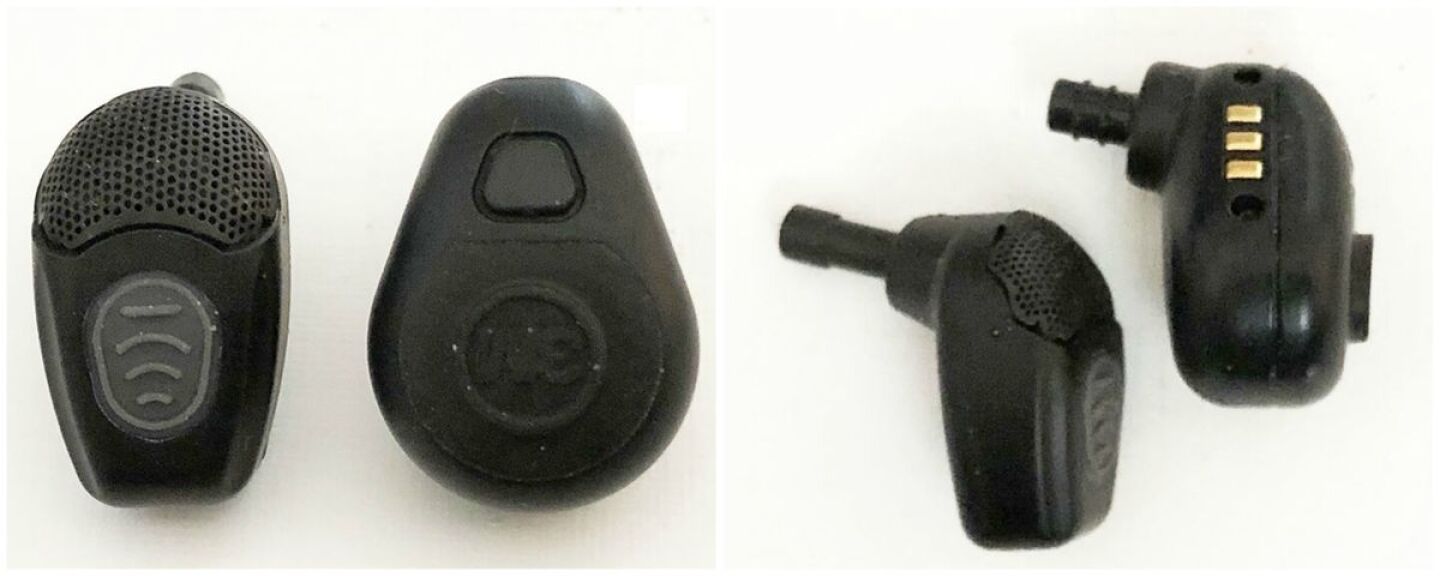Before you start your shift, you don and check your body armor and ensure your sidearm is loaded with one in the chamber. You have disposable gloves on your person to protect you from fluids or worse when searching a subject. Before you enter any range, you put on your eyes and ears. So why aren’t you protecting your hearing every day?
The National Fire Protection Association’s NFPA 1500 Standard on Fire Department Occupational Safety and Health Program addresses noise exposure for firefighters: “To comply with NFPA 1500, a fire department MUST provide hearing protection for all firefighters riding on apparatus who are subject to noise levels above 90 decibels.” It also requires that fire departments establish hearing conservation programs.
Unfortunately, there are no hearing protection mandates, nor is there data about hearing thresholds and the risk of noise-induced hearing loss (NIHL) for cops. In this French study involving 887 cops and 805 civil servants, cops were 1.4 times more likely to have hearing loss than civil servants. The difference was even greater for motorcycle police officers. While over-the-ear hearing protection might be great on the range, it is not appropriate for beat cops, supervisors, or command staff when out in public.
Just like you don’t wait for trouble to put on your vest or rack your sidearm, you cannot stop the action while you put on your ear protection. This means you need protection that can be worn while you are on your shift that doesn’t block your hearing under normal circumstances. This article discusses why auditory acuity is a vital element of policing, so solid earplugs are out, but amplified earplugs are in. If you wear an audio headset for your radio, consider getting one that will help protect that ear or use one that fits over the ear and can work with in-ear hearing protection.
At SHOT Show 2019, a handful of manufacturers had amplified in-ear protection products on display. The products I tested are the Peltor TEP-100 (the military/LE version of the TEP-200) and the OTTO NoizeBarrier Micro.
TEP-100 and NoizeBarrier Micro
The TEP-100 and NoizeBarrier Micro arrive in a cardboard box that contains a latched plastic case to protect and charge the earpieces, along with accessories and a handful of tips designed to fit most ears. Both cases store the earpieces and can charge the earpieces multiple times.
The earpieces run for about 16 hours on a charge; a fully-charged case can recharge the OTTO earpieces 20 times and the Peltor earpieces 16 times. Both cases are IP67-rated when closed.
The Otto case uses a built-in battery that is recharged through a micro-USB port, while Peltor uses three AA batteries. You also can use a USB adaptor connected to the case for charging, but one is not included. The Peltor earpieces have an auto shutoff if the volume button hasn’t been tapped for two hours and a warning chime lets you know a minute ahead of time to tap the earpieces.
The Otto case stores extra earwax filters and a removal/replacement tool, while the Peltor case has lanyard storage posts to prevent tangling. The Peltor earpieces do not have an earwax filter but has a smaller hole. Both come with a lanyard that helps prevent loss of the earpieces should one need to be removed. Both cases have a quick start guide inside the cover.
Suggested retail for both is $399. Suggested retail for the TEP-200 is $475.00, which also can receive wireless audio from 2-way radios using a neck loop accessory. Agency discounts are available directly from the manufacturers.
TEP-100 and NoizeBarrier Micro Ear tips
Since every ear is differently shaped and sized, even on the same person, both earpieces come with several silicone and foam tips, and both are sized closely enough to accept the same tips. The ear tip that is most comfortable and seals the ear is the best choice. However, the ear tip must seal well and prevent feedback (whistling) to provide proper protection. If none of the included tips fit perfectly, alternate tips are available from many sources including Amazon. The choices are many, including rubber, silicone and foam.
Rubber and silicone come in different sizes and shapes, such as single, double, or triple-flange, while foam is available in single- or multiple- use cylindrical or cone shapes in different densities. Even the famous Peltor Skull Screw will work. Just make sure to get the communications tips and not the earplug, which is solid.
No matter which one you choose, the ear tip is inserted into the ear canal either with or without lubrication where it is supposed to create a soundproof seal. With the electronics off, your hearing should be about the same as it is with a pair of over-the-ear muffs. Remember to replace the tips per the manufacturer’s instructions. While deeply-sealed foam ear tips generally make a tighter seal, they usually need to be replaced much more often than silicone eartips.
TEP-100 and NoizeBarrier Micro Fitting
The manufacturers took different approaches in regard to how the devices fit into your ear canal, where the microphone faces and how the device lays into your concha (the bowl-shaped portion of your outer ear).
It might make sense for your department to have both available for testing. A simple wipe with alcohol and boxes of replacement ear tips will let each cop figure out which one they want to wear.

The NoizeBarrier Micro (left) is narrower overall while the TEP-100 is narrower toward your ear canal. The microphone is behind a built-in windscreen and is aimed more to the front on the former while the mic is recessed on the latter. Both earpieces will accept the same tips. The earwax filter friction fits into the bulge on the shaft of the NoizeBarrier Micro. Note the differences in where the device enters your ear canal – this can make a big difference in comfort and sealing.
Photo/Ron LaPedis
Range Day
Unlike our eyes, where mass-produced sunglasses frames fit just about everyone, both the external and internal parts of our ears differ dramatically in size and shape. One size not only doesn’t fit all, it doesn’t even fit most. As you can see in the ear tips photo, both universal fit earpieces come with a handful of tips, one of which should fit. A search on Amazon will show dozens of different replacement ear tips, showing how individualized we are. Some people may need to use a different size or style of tip in each ear. My ear canals are V-shaped, which makes it hard for me to find comfortable tips that seal well.
I took an afternoon trip with some friends to Reed’s in Santa Clara along with 9mm and .45 ACP pistols and a shotgun with a selection of shells. Reeds has a loud exhaust system that was a great way to test for background noise.
I wore the Peltor TEP-100 first using Skull Screws, with an advertised NRR of 30 dB. It took about 10 minutes for the foam to completely expand to a point that provided the maximum protection. I could hear normal conversations on the low setting when I was on the sales floor and switching to the high setting let me hear conversations across the floor. Moving into the range, while the shots were still “sharp,” they were suppressed and conversation over the fans was possible with a raised voice. While the shots were suppressed, the background noise of the fans stayed constant, which means that only the peaks were being compressed with no recovery time (the “whooshing” or “breathing” sound that you sometimes hear using electronic muffs that simply reduce the volume when they detect a gunshot).
Using the controls was easy since all you do is push and hold the button to power on and off and tap to change between the two volume levels. When I used the high setting, there was a feedback “whistle” that I was never able to figure out how to eliminate.
Next, I tried the NoizeBarrier Micro using the large 3-flange tips with an NRR of 25 dB. The low setting on these was like the high setting on the TEP-100. Again, there were sharp but suppressed shots, and I was astounded when I could hear the echo of the gunshot from the walls. Just like the TEP-100, power and adjustments were as easy as pressing the button.
For more information on hearing protection for cops, visit the Police1 police headsets product category page.






